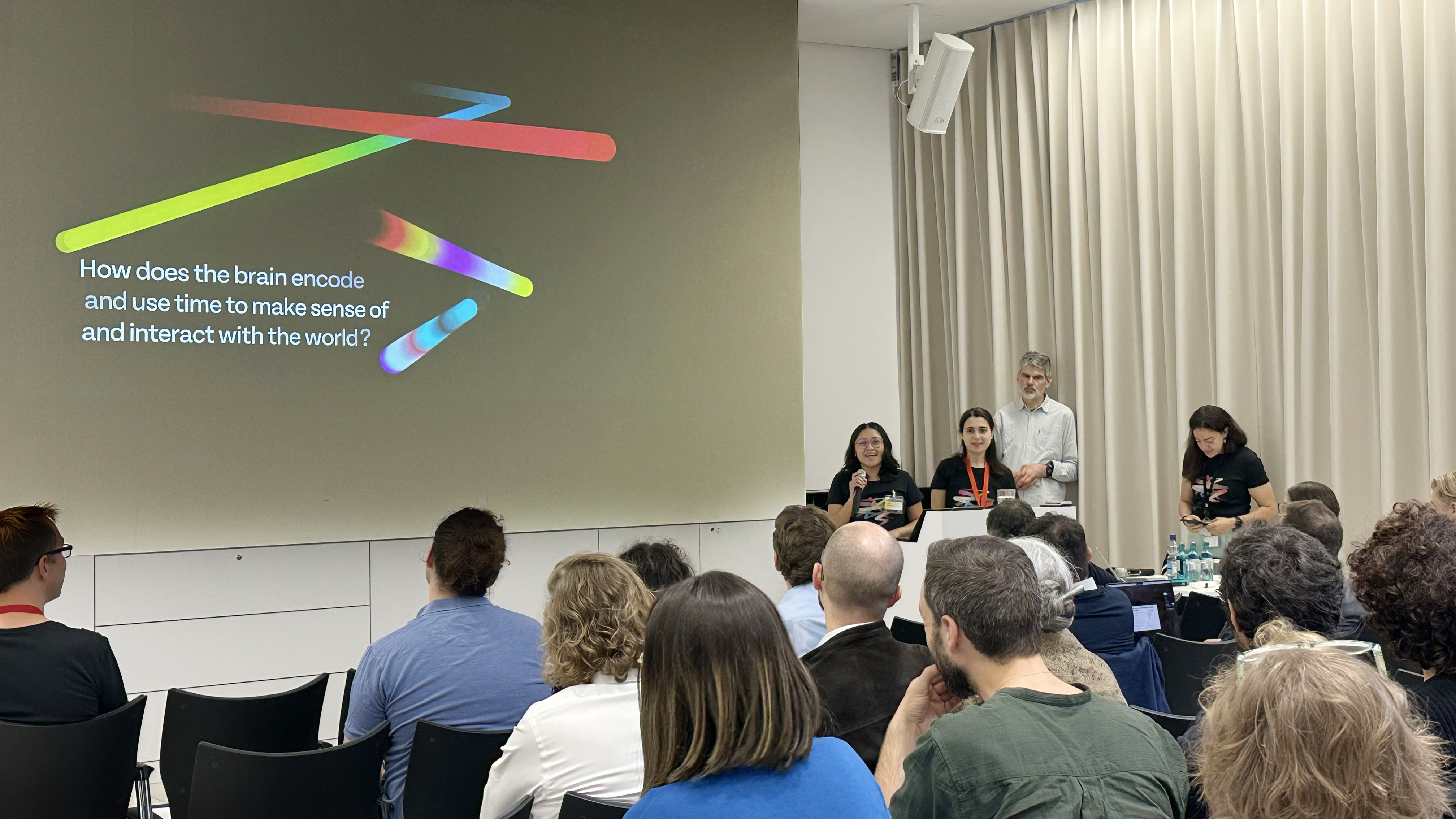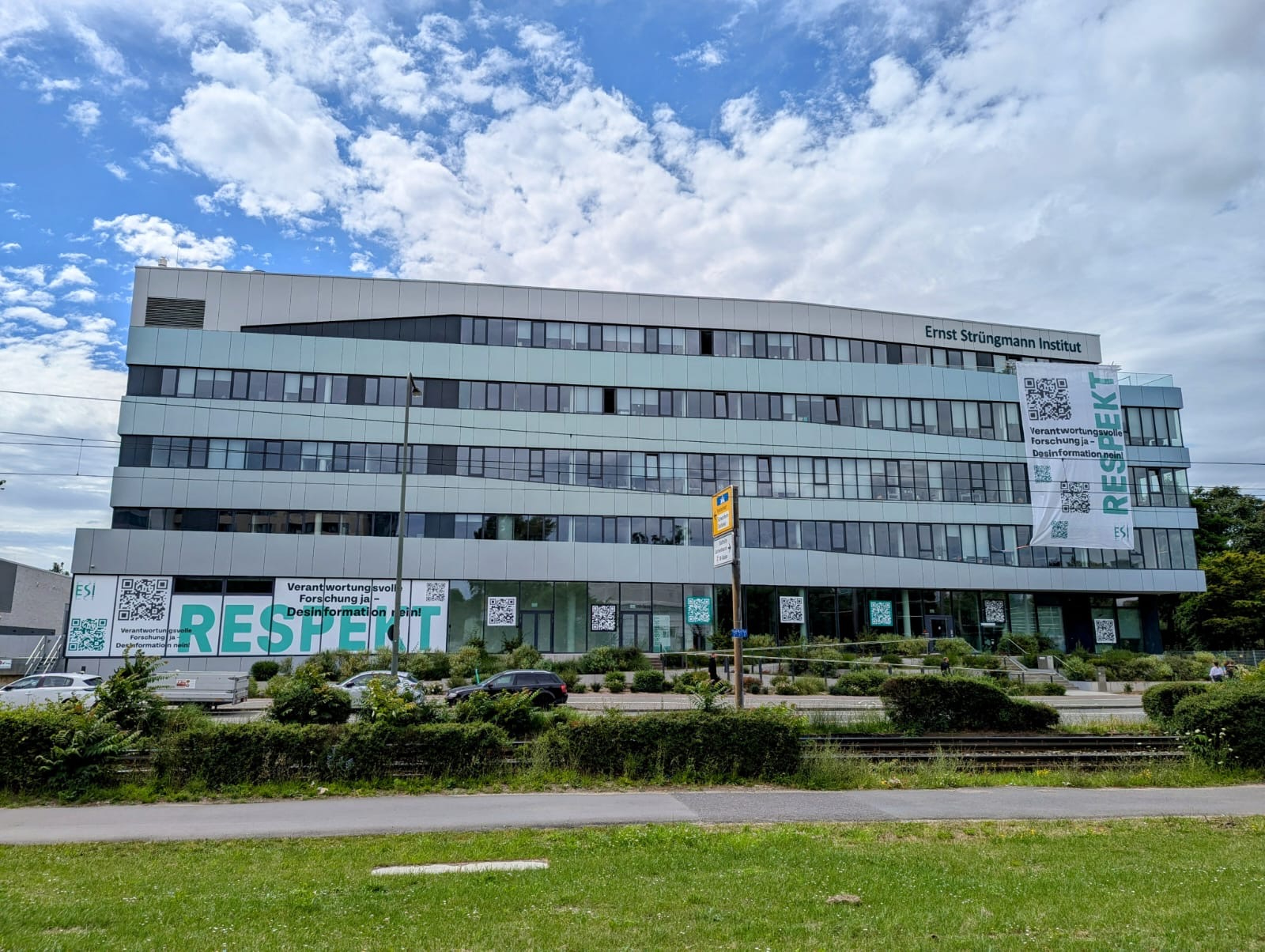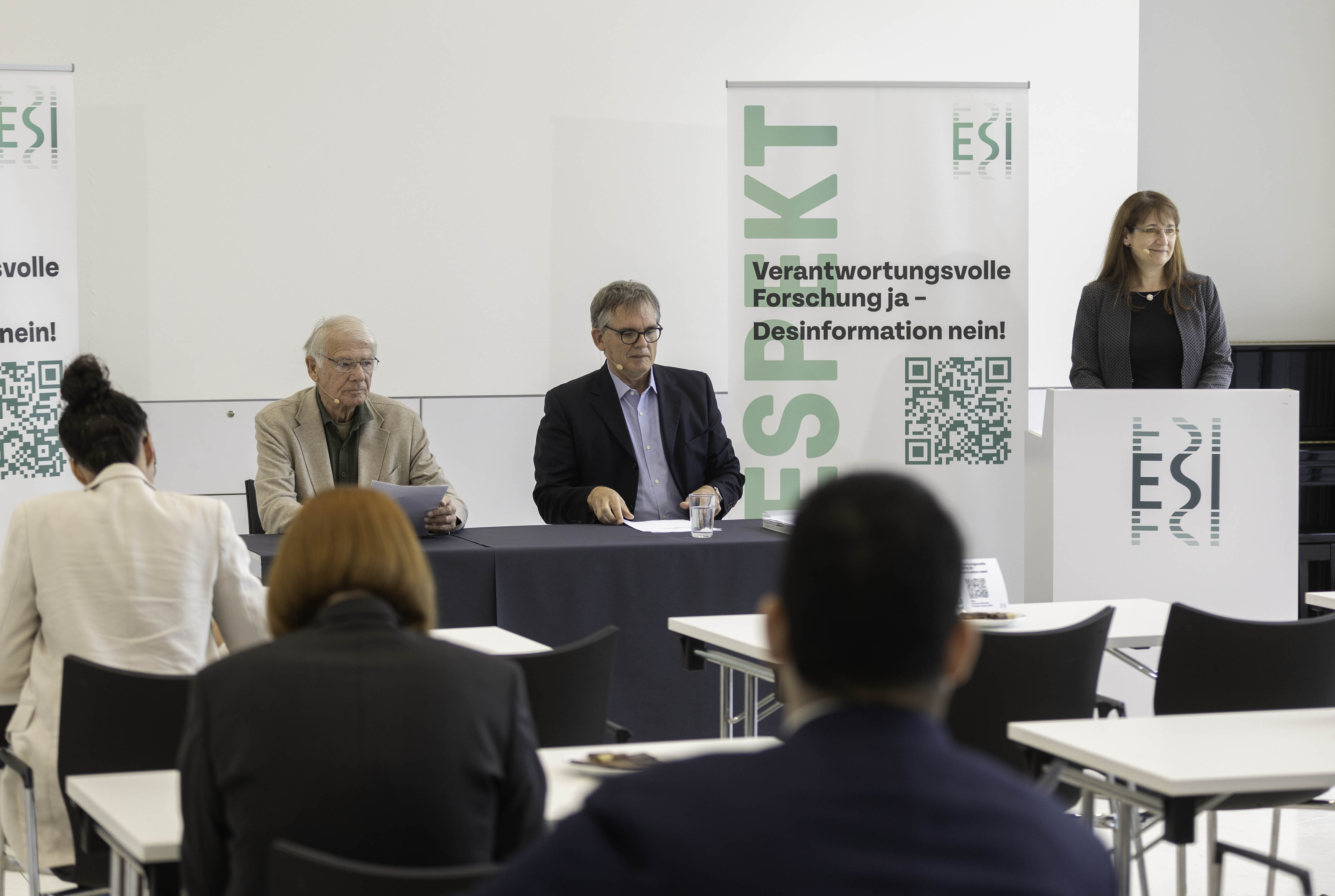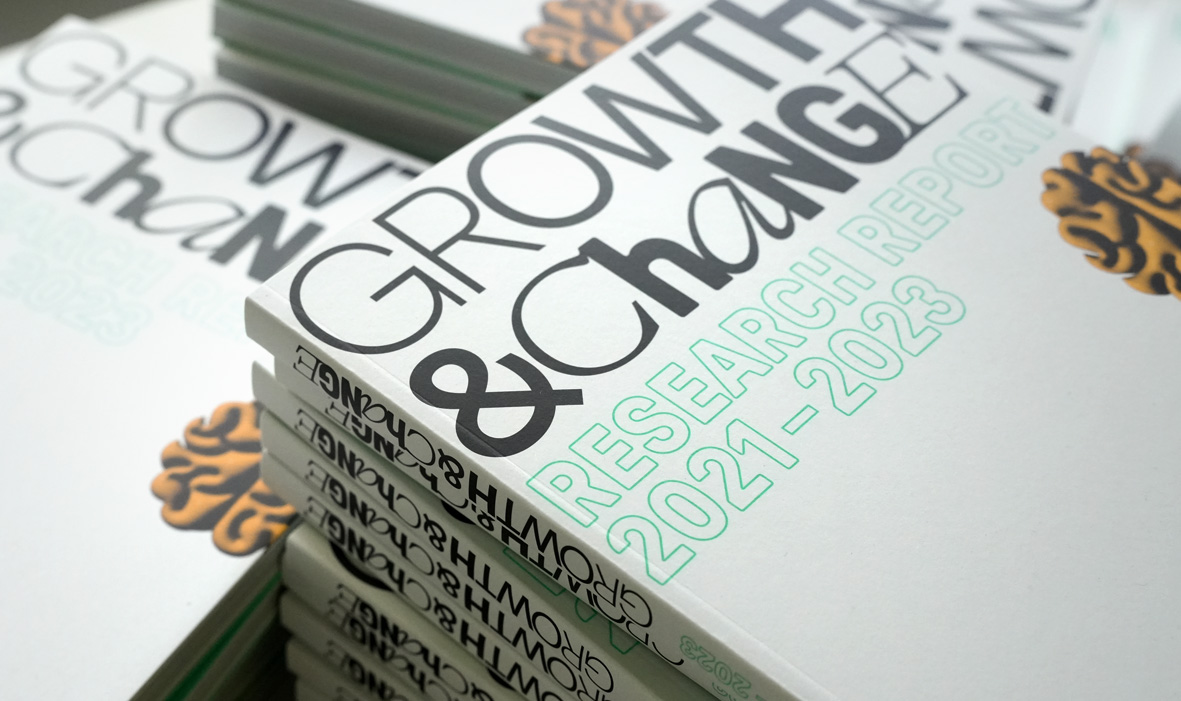
© Ernst Strüngmann Institute
Two days, eleven talks, and a vast array of new findings and groundbreaking perspectives: During the ESI Systems Neuroscience Conference (ESI SyNC), the ESI was fully focused on the study of time perception in the brain. Over 100 participants gathered to gain deep insights from internationally renowned speakers into this fascinating field of research.
Time is an essential part of our perception and behavior, yet how the brain encodes and processes time remains an underexplored area in neuroscience. The conference put this question at the center, shedding light on the topic from various angles. The presentations provided deep insights into the mechanisms governing temporal processes in the brain – from the coordination of movements to musical perception and decision-making. Internationally acclaimed scientists presented their latest research findings, offering exciting perspectives on the understanding of time perception in the brain.
Prof. Dean Buonomano: Can timing serve as a fundamental computational operation of neocortical circuits? Prof. Dean Buonomano explored this question by drawing on experimental data on the neural dynamics of temporal references in neocortical circuits.
Dr. Megan Carey: The cerebellum plays a crucial role in the spatial and temporal coordination of movements throughout the body. Dr. Megan Carey demonstrated how cerebellar mechanisms for learned timing have been deciphered and how these insights affect the temporal processing in the brain.
Dr. Matthias Grabenhorst: In everyday life, people predict when future events will occur. Dr. Matthias Grabenhorst showed how the human brain estimates probabilities over time – a key topic in temporal prediction and decision-making.
Prof. Andrea Ravignani: Who has rhythm? Prof. Andrea Ravignani examined why humans have rhythm, while other animals do not – and why some species even surpass our abilities. His research provided valuable insights into the evolution of rhythm perception in humans.
Prof. Caroline Palmer: Music as a social phenomenon was the focus of Prof. Caroline Palmer’s talk. She explained how music moves us by exploring the social interactions involved in group music-making.
Prof. Hugo Merchant: Prof. Hugo Merchant presented the latest findings on the neurophysiological principles that influence perception, predictive abilities, and the control of behavior through temporal events.
Dr. Joe Paton: Dr. Joe Paton’s lecture focused on the mechanisms in the spinal cord and hindbrain responsible for automated behavioral control, and how brain systems modulate these processes through learning.
Prof. Rachel Dension: Visual perception, attention, and decision-making were at the heart of Prof. Rachel Dension’s talk. She presented the latest findings on the temporal dynamics of these processes, based on behavioral measurements and neural data.
Dr. Tadeusz Kononowicz: Dr. Tadeusz Kononowicz explored the brain’s ability to evaluate its temporal errors within certain intervals and presented results from EEG, MEG, and in-vivo recordings.
Dr. Valérie Doyère: In her lecture, Dr. Valérie Doyère focused on the temporal mechanisms essential for associative memory and error detection in behavior.
At the end of the conference, a lively panel discussion took place, during which participants reflected on the collected insights and discussed potential future research questions. One thing became clear after these two intensive days: The study of time processing in the brain has only just scratched the surface. Promising approaches and open questions offer immense potential for future studies.




